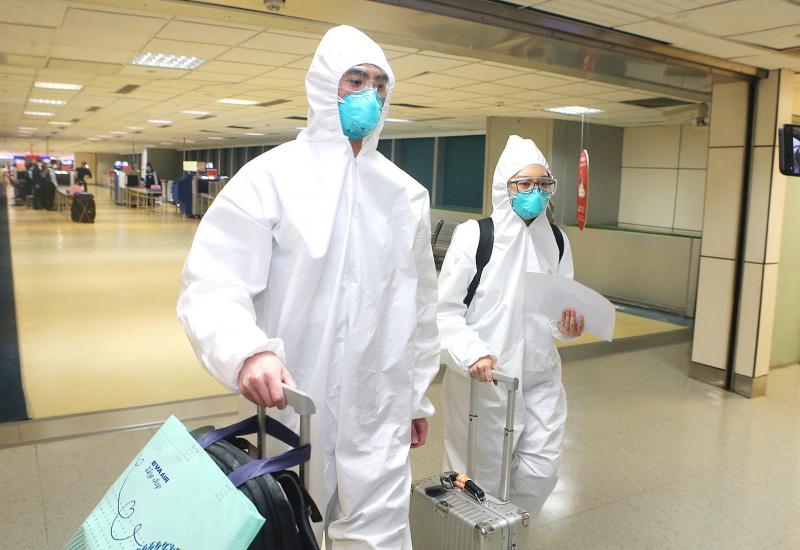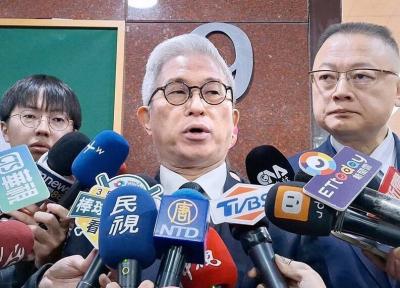The number of passengers passing through Taiwan Taoyuan International Airport on Saturday fell below the daily average during the height of the SARS epidemic in 2003, the National Immigration Agency said yesterday.
Only about 7,800 people traveled through the nation’s main international gateway, about 1,700 passengers fewer than the 9,500 who used the airport a day earlier.
That daily traffic was well below the 9,300 passengers handled on average by the airport in May 2003 at the height of the SARS epidemic, when economic activity in Taiwan and in the region ground to a halt, NIA statistics showed.

Photo: CNA
Passenger numbers at Taoyuan airport have been falling since Taiwan and governments worldwide began imposing travel restrictions to limit the spread of COVID-19.
Saturday’s passenger traffic at Taoyuan airport was far below the average daily traffic of 133,300 passengers in January — which was nearly identical to last year’s average of 133,400 passengers — and an estimated 70,000 passengers per day last month.
Because of declining demand, airlines have been cutting capacity, and yesterday, about three-quarters of scheduled arrivals and departures at Taoyuan airport were canceled, leaving only about 160 flights operating, the airport’s Web site said.

Taiwan is to commence mass production of the Tien Kung (天弓, “Sky Bow”) III, IV and V missiles by the second quarter of this year if the legislature approves the government’s NT$1.25 trillion (US$39.78 billion) special defense budget, an official said yesterday. Commenting on condition of anonymity, a defense official with knowledge of the matter said that the advanced systems are expected to provide crucial capabilities against ballistic and cruise missiles for the proposed “T-Dome,” an advanced, multi-layered air defense network. The Tien Kung III is an air defense missile with a maximum interception altitude of 35km. The Tien Kung IV and V

The disruption of 941 flights in and out of Taiwan due to China’s large-scale military exercises was no accident, but rather the result of a “quasi-blockade” used to simulate creating the air and sea routes needed for an amphibious landing, a military expert said. The disruptions occurred on Tuesday and lasted about 10 hours as China conducted live-fire drills in the Taiwan Strait. The Civil Aviation Administration (CAA) said the exercises affected 857 international flights and 84 domestic flights, affecting more than 100,000 travelers. Su Tzu-yun (蘇紫雲), a research fellow at the government-sponsored Institute for National Defense and Security Research, said the air

A strong continental cold air mass is to bring pollutants to Taiwan from tomorrow, the Ministry of Environment said today, as it issued an “orange” air quality alert for most of the country. All of Taiwan except for Hualien and Taitung counties is to be under an “orange” air quality alert tomorrow, indicating air quality that is unhealthy for sensitive groups. In China, areas from Shandong to Shanghai have been enveloped in haze since Saturday, the ministry said in a news release. Yesterday, hourly concentrations of PM2.5 in these areas ranged from 65 to 160 micrograms per cubic meter (mg/m³), and pollutants were

Taiwan’s armed forces have established response protocols for a wide range of sudden contingencies, including the “Wan Chun Plan” to protect the head of state, the Ministry of Defense (MND) said today. After US President Donald Trump on Saturday launched a series of airstrikes in Venezuela and kidnapped Venezuelan President Nicolas Maduro, concerns have been raised as to whether China would launch a similar “decapitation strike” on Taiwan. The armed forces regularly coordinate with relevant agencies and practice drills to ensure preparedness for a wide range of scenarios, Vice Minister of National Defense Hsu Szu-chien (徐斯儉) told reporters before a